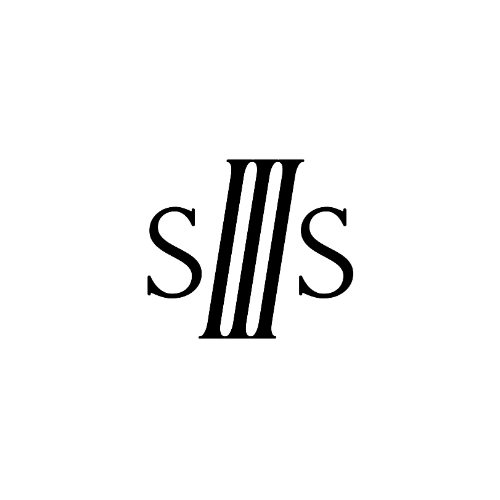The Art Market Slowed Down—But Sales Are Up. Here's Why.
In this month’s article, we explore the 2024 art market through insights from the UBS and Art Basel Art Market Report—a comprehensive look at the year’s economic trends across galleries, dealers, collectors, and more—and what it signals for the year ahead.
Quick Takeaways:
Sales volume rose 3% in 2024, driven by growth in sales of lower-priced works, while high-value sales declined significantly.
Total global sales value fell 12% in 2024 to $57B mostly due to an overall shift to lower priced works (under $50,000).
The U.S. still leads the market at 43% share, though activity is cooling; China’s market is at its lowest since 2009.
Art communities are becoming more regionally concentrated, with emerging growth in areas like the Southeast U.S., the Midwest, and parts of San Francisco.
Connection and Community are sought after, as Fairs, auctions, and in-person events continue to gain ground
Increased Sales, Lower Values
The art market in 2024 tells a story of both contraction and growth. Total global art sales value declined by 12% year over year, settling at $57.7 billion. That reduction was primarily the result of a slowdown in high-value transactions—typically artworks sold for hundreds of thousands or even millions of dollars—which have historically driven the market’s top-line figures.
At the same time, the number of artworks sold increased by 3%, showing that the market is still active. Collectors are still buying, but they’re gravitating toward more modestly priced pieces—especially works under $50,000. This shift reflects both caution in an uncertain economic climate and the growing influence of younger, less investment-focused buyers.
Newer collectors are entering the market with different motivations. Rather than seeking blue-chip works or major-name investments, they’re buying art that resonates with their personal tastes and values. Political uncertainty and economic nerves around the U.S. election also contributed to hesitation among high-end buyers, creating a climate where smaller purchases flourished.
US and UK Remain as Key Players
The U.S. remains the world’s largest art market, responsible for 43% of all global sales. However, activity in the upper echelons of the market has slowed, affecting global totals. Since the U.S. accounts for a significant portion of the world’s high-value transactions, its shift away from big-ticket purchases has had an outsized impact.
China’s market declined to $8.4 billion—its lowest level since 2009—amid ongoing economic pressures and policy headwinds. The UK remains the second-largest market globally, but also experienced its second year of slowdown in high-value activity. These shifts reflect broader global uncertainty and a hesitancy among top-tier collectors.
Regional Shifts and Submarket Trends
When looking at global figures, it’s important to remember that the art market is also made up of many submarkets—from antiques to ultra-contemporary to the primary and secondary sales channels—each responding differently to changing conditions. In 2024, 31% of global sales took place through art fairs and auctions. These in-person events are once again central to the market, offering collectors a way to experience art firsthand, connect with galleries, and make decisions grounded in real-time interaction.
Narrowing down geographically, art communities are becoming more concentrated in regions that weren’t traditionally art powerhouses. New York remains vital, but areas like Tribeca are gaining ground as younger galleries and artists move in. Across the country, growth is accelerating in the Southeast, Midwest, and parts of the West Coast—including an uptick in activity around San Francisco.
These regional shifts reflect a broader decentralization of the art market. With high costs in legacy cities, collectors, artists, and dealers are seeking out new communities with lower barriers to entry and fresh perspectives.
Looking Ahead
Rising tariffs and shipping costs continue to add pressure, making it more expensive to move art across borders. Many in the industry are adjusting to the new reality rather than overreacting—waiting to see how these policies settle before making major changes. In the meantime, this may push the market toward more localized transactions and collecting.
The biggest structural shift may be generational. Over the next decade, $83 billion in generational wealth is expected to change hands, much of it transferring to women and younger heirs. This group is poised to reshape collecting priorities. Many will not liquidate collections immediately—either because of emotional connection or a different approach to value and ownership. This could lead to fewer high-value sales but deeper personal engagement with art.
Buyers are becoming more reflective, more interested in the meaning behind the art they collect. The rise in sales under $50,000 supports this, suggesting people are buying what they love—not just what they think will appreciate in value.
The 2024 art market reflects a moment of reset. While the overall value of global sales declined, broader participation, regional growth, and new buying patterns suggest a shifting but healthy market. As the world adjusts to economic and political changes, the art market is slowly returning to what makes it meaningful: connection, reflection, and the freedom to collect based on emotion—not just investment potential.
Resources:
UBS and Art Basel. The Art Market 2024. UBS, 2024, www.ubs.com/global/en/our-firm/art/art-market-insights.html. Accessed 16 Apr. 2025.

